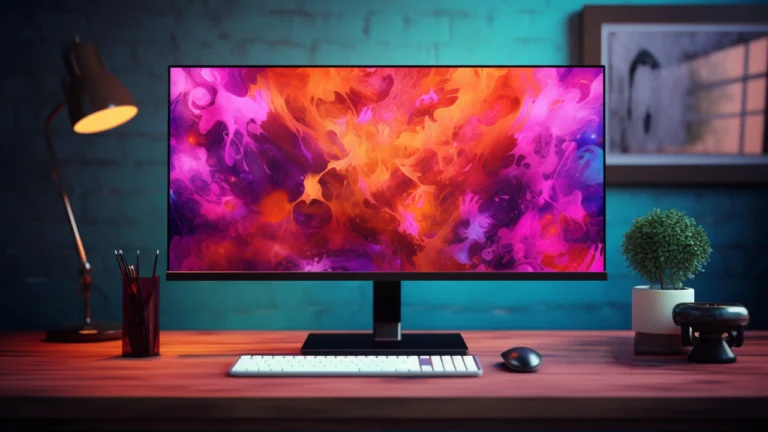4K vs 2K vs 1080p Monitors: Which One Should You Choose?

In today’s rapidly evolving digital world, choosing the right monitor resolution is no longer just a tech enthusiast’s concern. Whether you’re a gamer, content creator, remote worker, or casual user, understanding the differences between 1080p, 2K, and 4K displays can greatly impact your experience. This guide breaks down the technical details, real-world performance, and ideal use cases for each resolution to help you make an informed decision.
What Do 1080p, 2K, and 4K Actually Mean?
1080p (Full HD): This resolution is 1920 x 1080 pixels. It has long been the standard for high-definition displays and is still widely used today for both work and entertainment.
2K (Quad HD or QHD): Typically refers to 2560 x 1440 pixels. It’s a middle ground between Full HD and 4K, offering increased clarity and screen real estate without the GPU demands of 4K.
4K (Ultra HD): With a resolution of 3840 x 2160 pixels, 4K delivers four times the pixel count of 1080p, making it the sharpest of the three.
Each resolution has its own strengths and trade-offs, which we’ll dive into below.
Visual Quality and Detail
1080p: Offers decent image clarity on smaller screens (under 24 inches), but on larger monitors, you may notice pixelation or lack of sharpness.
2K: Provides a noticeable upgrade in clarity compared to 1080p. It’s particularly useful for 27″ to 32″ monitors where extra pixel density enhances readability and visual detail.
4K: Superior sharpness, ideal for photo/video editing, watching UHD content, and immersive gaming. On monitors 32 inches and above, 4K truly shines.
Performance and Hardware Requirements
1080p: Easiest on your system’s resources. Even entry-level GPUs and integrated graphics can handle this resolution without issue.
2K: Requires more GPU power, but modern mid-range graphics cards can handle it comfortably, even for gaming.
4K: Demanding. To game or edit video in 4K, you’ll need a high-end graphics card, lots of RAM, and a fast processor. Otherwise, you might experience lag or frame drops.
Key takeaway: If your system isn’t equipped for 4K, sticking to 1080p or 2K will ensure smoother performance.
Use Case Scenarios
Gaming
1080p: Best for budget-conscious gamers looking for high frame rates. Competitive players may prefer 1080p because it’s easier to hit 144+ FPS.
2K: A sweet spot for many gamers. Offers a noticeable visual upgrade over 1080p while remaining achievable at higher frame rates.
4K: Unmatched visual fidelity but requires top-tier hardware. Best for single-player, story-driven titles where visuals matter more than frame rate.
Professional Work (Photo/Video Editing, Graphic Design)
1080p: May suffice for basic editing but lacks the detail needed for professional-grade work.
2K: Better for detailed tasks like photo editing, giving you more working space and finer control.
4K: Ideal for professional use. Allows you to see the finest details and preview 4K content natively.
Productivity and Office Use
1080p: Still very usable for office tasks. Works well for word processing, spreadsheets, and emails.
2K: Offers more space to multitask without scaling issues. Great for professionals managing multiple windows.
4K: Excellent for high-productivity environments, especially if you’re using large monitors or multiple displays. Be mindful of scaling settings to maintain readability.
Media Consumption
1080p: Supports most streaming services and content. Perfectly fine for casual viewing.
2K: Not a major improvement for video watching unless content supports QHD resolution.
4K: Best experience for Netflix, YouTube, or Blu-ray UHD content. Richer detail and colors, assuming your internet speed can handle it.
Price and Availability
1080p: Most affordable. You can find good-quality 1080p monitors under $150.
2K: Mid-range pricing. Offers better specs at reasonable prices (typically $200-$400).
4K: Most expensive, though prices have dropped significantly. Expect to pay $300 to $1,000+ depending on size, refresh rate, and panel quality.
Scaling and Text Size Considerations
1080p: No scaling needed. Text and UI elements appear normal by default.
2K: Usually doesn’t require scaling, but slight scaling can enhance readability on higher DPI screens.
4K: Almost always requires scaling (150% or more) on Windows to prevent tiny text. macOS handles scaling more gracefully.
Poor scaling can ruin your experience, especially on Windows systems not optimized for high-DPI displays.
Longevity and Future-Proofing
1080p: Still relevant, but may become outdated for high-end work or gaming setups.
2K: Likely to remain a standard for years, striking a balance between clarity and performance.
4K: Future-proof but may need hardware upgrades down the line to keep up with evolving software demands.
Which One Should You Choose?
Choose 1080p if you’re on a budget, have a low-powered system, or use your monitor for basic tasks.
Choose 2K if you want a balance of performance, price, and clarity for gaming, work, and general use.
Choose 4K if you’re a content creator, serious gamer, or just want the best visual experience and have the hardware to support it.
Still unsure? Check out our expert-curated list of the best 4K monitors to see what’s available right now.
Conclusion
Monitor resolution can drastically affect your computing experience. While 1080p remains a viable choice for casual users, both 2K and 4K offer tangible benefits in clarity and screen real estate. As hardware continues to evolve and prices become more accessible, 4K is fast becoming the new standard.
Whether you opt for crisp 2K detail or full 4K brilliance, the right monitor can elevate everything from your workday to your gaming sessions. Make your choice based on your needs, budget, and system capabilities—and enjoy the view!






